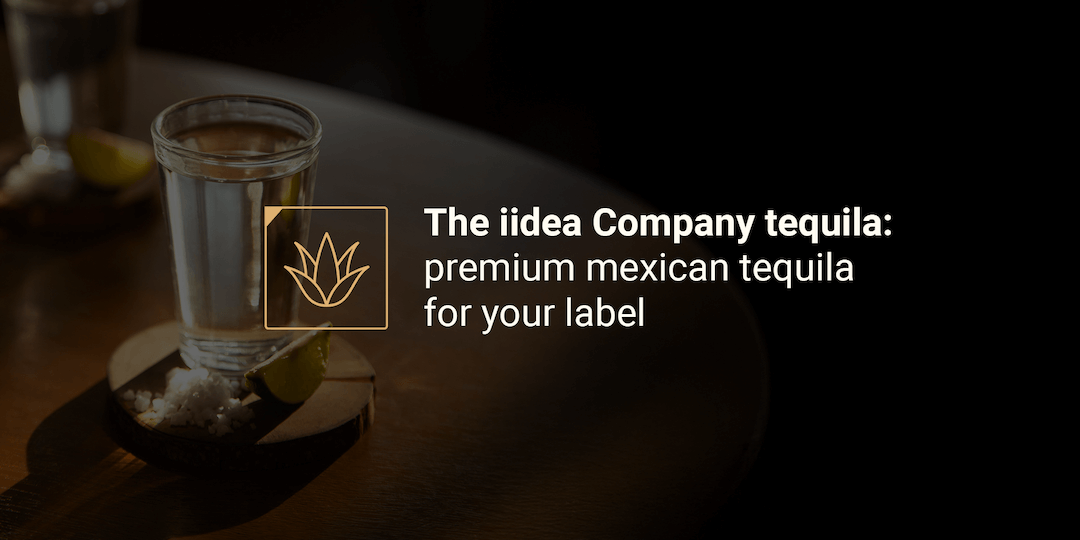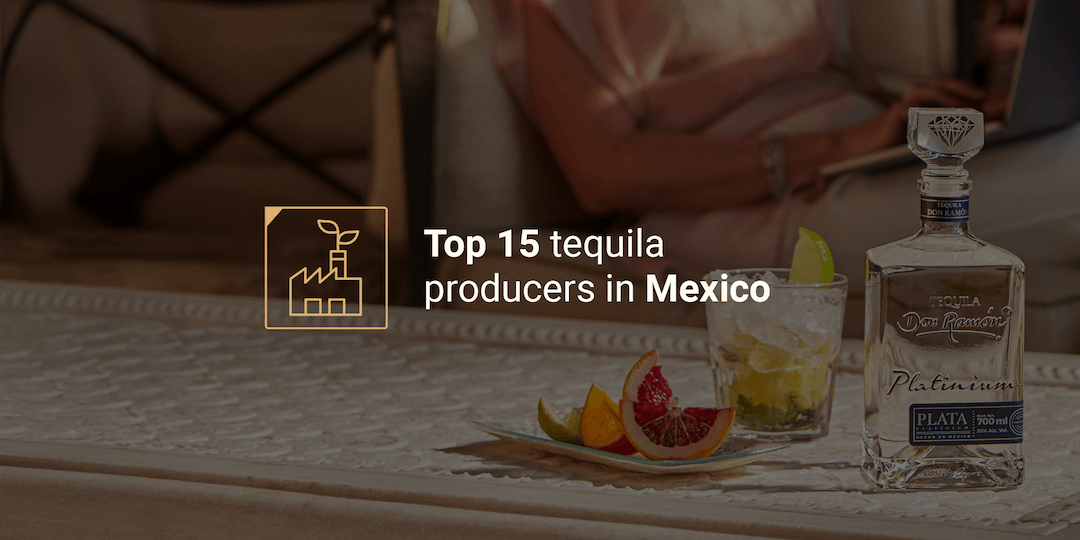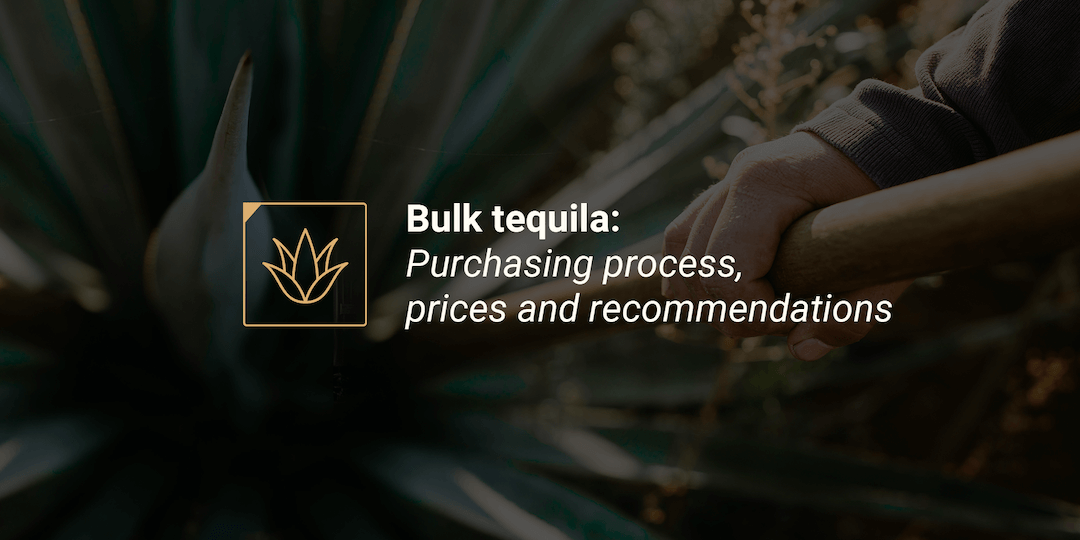How is tequila made? The tequila production process
Tequila is more than just a spirit, it's a symbol of Mexican heritage, crafted with tradition and precision.
Made exclusively from the blue agave plant in the state of Jalisco and a few select regions, tequila production follows a meticulous, legally regulated process to ensure quality and authenticity.
But, how do they make tequila from raw agave to the smooth, complex flavors we enjoy? In this guide, we’ll break down each step, keep reading to uncover the journey of tequila from plant to bottle!
How is tequila made?
- The origin: the blue agave plant
- The harvest: preparing the agave for tequila
- Cooking: transforming agave starch into sugars
- Extraction and fermentation process: turning agave juice into alcohol
- Distillation: refining the spirit
- Aging and types of tequila
- Bottling and final touches
Tequila is one of Mexico’s most iconic spirits, enjoyed worldwide for its unique flavor and cultural significance.
From harvesting the blue agave plant to aging the spirit in oak barrels, each step contributes to the final product’s rich complexity. Understanding how tequila is made allows you to appreciate the dedication behind each bottle.
Whether you prefer blanco tequila’s crisp freshness or the deep, complex flavors of extra añejo, learning about its production enhances your drinking experience.
Keep reading to discover the fascinating journey from the blue agave plant to your glass.
1. The origin: the blue agave plant
Tequila and mezcal are made both from agave, however tequila is made exclusively from the blue agave plant (Agave tequilana Weber var. azul), which is carefully cultivated in the volcanic soil of Jalisco.
The region's climate and terrain provide the perfect conditions for growing high-quality agave.
It’s a process that requires patience, as the blue agave takes 6 to 10 years to mature before it is ready for harvesting.
The harvest is done by jimadores, skilled workers who have a deep knowledge of the plant and its needs.
The environment plays a crucial role in shaping the flavors of tequila. Agave grown in different regions of Jalisco results in varying taste profiles, which makes tequila a highly versatile spirit.
- Highlands (Los Altos): Agave from the highlands is known for a sweeter flavor profile.
- Valley (El Valle): Agave from the valley typically produces earthier, herbal notes.
Understanding these regional differences is key to appreciating the complexity of tequila’s flavor.
Tequila production is strictly regulated, ensuring that only spirits made from blue agave within specific regions of Mexico can be labeled as “tequila”.
This ensures that the spirit maintains its authenticity and high quality, which contributes to its status as Mexico’s most iconic beverage.

2. The harvest: preparing the agave for tequila
The harvest of agave is a crucial step in tequila production, and it’s carried out by skilled workers known as jimadores.
These experts use a specialized tool called “coa” to cut the agave's spiky leaves and extract the heart, known as the piña.
The piña is the most valuable part of the plant, as it contains the natural sugars necessary for fermentation. It weighs between 40 to 200 pounds, and contains the sugars essential for fermentation.
The timing of the harvest is critical to the quality of the tequila.
If the agave is harvested too early, it won’t have developed enough sugar, which results in a lower-quality tequila.
Conversely, if the agave is left to ripen for too long, it may become over-ripe, which can negatively affect the final flavor profile of the tequila.
The goal is to ensure the agave is perfectly ripened, balancing sweetness and the natural flavors that will later shine through in the tequila. A perfectly ripened agave is crucial for producing high-quality tequila.
3. Cooking: transforming agave starch into sugars
After the agave piñas are harvested, they are transported to distilleries where they undergo the crucial cooking process.
The purpose of cooking is to break down the agave’s starches into fermentable sugars, which are necessary for the fermentation process that ultimately transforms the agave into tequila.
There are two primary methods used for cooking the agave:
Traditional brick ovens (hornos)
This traditional method involves cooking the agave in large brick ovens over a period of 24 to 48 hours. It is a slower process, allowing the agave to caramelize gradually.
The gradual caramelization contributes to a richer, more complex flavor profile in the final tequila. This method is typically used for premium or artisanal tequilas, where flavor complexity is highly valued.
Autoclaves (industrial ovens)
On the other hand, autoclaves are industrial pressure cookers that cook the agave much more quickly. Using pressurized steam, the agave is cooked in 6 to 8 hours, significantly speeding up the process.
This method is much more efficient for large-scale production, making it ideal for brands that prioritize mass production over flavor intricacies.
Both methods, while different in their approach, ultimately aim to soften the agave and release the natural sugars that are essential for the next step in the tequila-making process: fermentation.
The choice between traditional brick ovens and industrial autoclaves often depends on the producer's production scale and desired flavor profile.
Whether a distillery opts for the slow, traditional method or the faster, industrial process, the key is ensuring that the agave is cooked to perfection so that the natural sugars can be fermented into alcohol.
The cooking stage is a delicate balance of time, temperature, and technique that plays a significant role in shaping the character of the final product.

4. Extraction and fermentation process: turning agave juice into alcohol
After the agave is cooked and softened, the next crucial step in the tequila-making process is the extraction of its sweet juice, known as mosto.
This step is essential because it is the natural sugars in the agave juice that will eventually be fermented into alcohol.
The extraction can be done using one of two main methods:
Traditional Tahona
The tahona is a large, traditional volcanic stone wheel that slowly crushes the agave fibers to extract the juice. This method is labor-intensive and requires skilled workers to operate the tahona, but it is favored for its ability to release the agave’s full range of flavors.
The slow crushing process produces a more complex and richer flavor profile in the resulting tequila, making it ideal for premium and artisanal tequilas.
Modern milling machines
For larger-scale tequila production, modern milling machines are often used.
These machines can efficiently crush the agave and extract more juice in a shorter amount of time. While this method is faster and more efficient, it may result in slightly less flavor complexity compared to the tahona.
However, it is highly effective for producing large volumes of tequila while maintaining consistent quality.
Once the agave juice (mosto) has been extracted, it is transferred to fermentation tanks where the critical fermentation process begins.
Fermentation is a critical step in tequila production. During this process:
- The extracted agave juice is transferred to fermentation tanks made of either wood or stainless steel.
- Yeast is added to convert the natural sugars into alcohol. Some distilleries use wild yeast from the environment, while others introduce cultivated strains to ensure consistency.
- The fermentation period lasts between 3 to 7 days, depending on the desired flavor profile. A longer fermentation can develop more complex flavors.
- The resulting liquid, called tepache, contains alcohol but must be distilled to increase its strength and purity.
- The tepache is then ready for distillation, a process that will increase its alcohol content, refining it into the higher alcohol strength typical of quality tequila.
5. Distillation: refining the spirit
Once the agave juice has undergone fermentation, it enters the critical stage of distillation, where the alcohol content is concentrated, and the flavors are refined.
Tequila is typically distilled twice to achieve the purity and strength required for the final product.
This process is essential for removing impurities and enhancing the overall smoothness of the spirit.
First distillation: Destrozamiento (Tequila Ordinario)
The first distillation, called destrozamiento, produces a cloudy, lower-alcohol liquid known as Tequila Ordinario. During this stage, the liquid is heated in copper or stainless steel stills, and the alcohol vapor rises, leaving behind solid matter. The resulting liquid has a lower alcohol content and still requires refinement.
This agave juice contains:
- Lower alcohol content: The Tequila Ordinario has an alcohol concentration of about 15-25% ABV, much lower than the final product.
- Cloudy appearance: The liquid is still impure and contains undesirable compounds that need to be removed in the second distillation.
- Initial flavor base: While not yet refined, the Tequila Ordinario gives distillers a foundation for the final flavor profile.
The first distillation serves as a base, but the final product will only take shape after the second distillation.
Second distillation: Rectification (Tequila Blanco)
The second distillation, known as rectificación, is where the tequila is purified, and its alcohol content is concentrated to its final level.
The result is Tequila Blanco, a clear and higher-proof spirit that is now ready for consumption or aging, depending on the production method.
The second distillation results in:
- Higher alcohol content: The second distillation increases the alcohol concentration to a minimum of 35-55% ABV, the legal standard for tequila.
- Purity enhancement: Impurities such as methanol and heavier compounds are eliminated, leaving behind a smoother, cleaner spirit.
- Flavor refinement: The rectification process also improves the tequila's flavor by removing harsh notes and leaving a balanced and smooth taste.
6. Aging and types of tequila
Tequila is categorized based on its aging process, which significantly affects its flavor and complexity:
- Blanco Tequila (Tequila Blanco): Unaged or aged for less than two months. It has a pure agave flavor with fresh, citrusy, and peppery notes.
- Reposado Tequila: Aged between 2 to 12 months in oak barrels, developing smoother and slightly oaky characteristics.
- Añejo Tequila: Aged between 1 to 3 years, resulting in richer, more complex flavors with hints of caramel and vanilla.
- Extra Añejo: Aged for more than 3 years, producing deep, layered flavors comparable to fine whiskey or cognac.
Tequila is aged in oak barrels, which can be American or French oak.
Some distilleries even use barrels that previously held bourbon or wine, adding unique nuances to the final product.
7. Bottling and final touches
Once the tequila reaches its desired aging level (or is ready as a blanco), it is filtered, diluted (if necessary), and bottled.
100% agave tequila is labeled as such, guaranteeing that it is made exclusively from blue agave without added sugars.
The final product must meet strict Mexican government regulations before it can be sold domestically or exported internationally.
If you want to know more on this topic, we recommend: Tequila label requirements and regulations.
On the other hand, if you're looking for tequila producers for your business, we’ve put together a top list to help you find the best producers for your needs: The world's most awarded tequila producers in Mexico. Make sure to check it out to explore potential business partnerships with top-quality tequila distilleries.
.png?width=1080&height=1350&name=Gr%C3%A1fico%205%20Bulk%20tequila%20(1).png)
Tequila: a legacy made from agave
The journey of tequila from the blue agave plant to a bottled spirit is a testament to Mexican tradition, craftsmanship, and innovation.
Each stage—harvesting the agave, cooking, fermentation, distillation, and aging—plays a crucial role in developing the flavors and characteristics that define 100% agave tequila.
Whether you prefer the crisp, unaged profile of blanco tequila or the deep, complex flavors of extra añejo, every sip tells a story of heritage and dedication.
Tequila is more than a drink; it’s a cultural legacy protected by strict regulations and appreciated worldwide.
As you explore the world of aged tequilas and different types of tequila, remember to enjoy it responsibly. Savor its nuances, pair it with the right foods, and share it with good company.
Now that you know how tequila is made, why not dive deeper into the world of agave spirits? Check out other related articles like: Where can I buy tequila in bulk to distribute? or How to sell tequila: the ultimate guide (2025).
And if you're looking to enter the tequila industry with the highest quality mexican beverage, Dialce is your go-to partner.
With years of expertise in providing premium bulk tequila and offering private label services, we help bring your vision to life.






